
CONTENTS





FOREWORD

T he Shoninki is the essential reference work of ninjutsu. In feudal Japan it was even used as a sign of recognition between shinobi (ninja). This is why any person practicing ninjutsu or having any interest in the subject at all should own a copy of this book and refer to it regularly. Not only does this version provide the most trustworthy reference on ninjutsu now available outside of Japan, but it also stands out as the keystone for any library devoted to the martial arts. Beyond that, this book deserves a place of choice in the libraries of all those interested in ancient Japan.
This text by the master ninja of the Kishu School, Natori Masazumi, is his masterpiece, offering readers an unprecedented view of seventeenth-century Japan as seen by one of its essential figures. More than just a practical manual, this book offers testimony from a remote past, from a time and a land where the slightest mistake could mean death. It is like an ancestor to whom we owe the greatest respect. Along with the Ninpiden, the Bansenshukai, and the Ninpo Hikan, it is the progenitor of all books on traditional ninjutsu.
The Shoninki advocates detachment, self-esteem, and letting go. As a psychotherapist I cannot help but give my blessing to this undertaking. Whats more, it encourages self-knowledge and trust in our own intuition, which meshes perfectly with my own concerns as a Zen practitioner.
The modern reader may not know what good fortune it is that we can hold this book in our hands. After remaining a closely guarded secret for a long time, even in Japan, this ninja bible has crossed over ages and continents to make its way to us and surrender its age-old secrets. More importantly, its appearance in the Western world should cast a light that will banish to the shadows a good many mediocre books on this subject written by authors enslaved to sensationalism.
May this book, dear readers, find in your heart the powerful light (daikomyo) and rekindle it for greater happiness and success in your lives.
BERNARD BORDAS,
BUJINKAN SHIHAN
Bernard Boras was born in 1957 and started to practice the martial arts and combat sports at age eleven. He is the recipient of the title Shihan (Master Expert in Japanese martial arts) from the Bujinkan organization, a prestigious martial arts schoolparticularly of ninjutsufounded and directed by Master Masaaki Hatsumi. Bordas has devoted his life to the practice of ninjutsu, which he states, is not only a technique but also a state of mind: survival.
INTRODUCTION
THE CULTURAL AND PHILOSOPHICAL CONTEXT OF THE SHONINKI

I n feudal Japan, the ninja were agents employed to perform espionage and guerilla missions. The Shoninki (which translates into English as authentic ninja tradition) is the work of Natori Masazumi, the master ninja who directed the Kishu School (Kishu-ryu) of one of the principal ninja clans in seventeenth-century Japan. For this reason, this short treatise is one of the most important documents on ninjutsu (ninja practices). It makes it clear that, far from being restricted to a purely physical teaching, the ninjutsu practice was accompanied by a foundational teaching that was philosophical, even esoteric, in nature, which moves it beyond being simply a set of techniques. It is my intention to provide in this introduction a few of the factors that make it possible to comprehend the doctrines on which the Shoninki was based as well as its historical and cultural background.
The regions of Koga and Iga in the area surrounding Lake Biwa (see page 2) were the geographical heart of traditional ninjutsu. They are considered as the birthplace of the ninpo (ninja practices), and the names of the old ninjutsu schools of Iga and Koga (Iga-ryu and Koga-ryu) are still famous today. Today the ancient province of Iga is part of the modern prefecture of Mie, while Koga (an administrative subdivision of the former province of Omi) is part of the modern prefecture of Shiga. The Kishu-ryu schoolassociated with the former province of Kishu located south of Igais sometimes regarded as a derivative branch of the Iga-ryu. Today Kishu corresponds to the prefecture of Wakayama (near Kii peninsula). Geographically, all of the ancient centers connected with the ninja are located in the current region of Kansai (or Kinki).
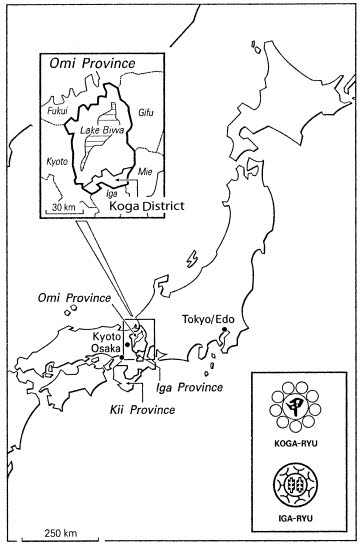
Map of Japan, with ancient ninja areas around Lake Biwa Inset: Seals of the Koga and Iga Schools
NINJA: THE HISTORY OF A WORD
The ninja had many different names bestowed upon them in different regions and at different times. The generic terms of mawashi-mono (or kancho-no-mono), derived from the verb mawasu, to circle around, and saguri-no-mono, from the verb saguru, to look for, spy, probe, were used to designate spies. The term ninja or shinobi (which is a different reading of the same ideograms) was used only in some provinces.
Names of the Ninja in the Various Regions of Feudal Japan
Kyoto/Nara:suppa or seppa, ukami, dakko, shinobi, or shinobu
Aorimi: hayamchimono, shinobi, or shinobu
Myagi:kurohabaki
Kanagawa:kusa, kamari, monomi, rappa, toppa
Tokyo/Edo:onmitsu, oniwaban
Yamanashi:mitsumono, suppa or seppa, sukinami, denuki
Aichi:kyodan
Fukui:shinobi or shinobu
Nigata:nokizura, kyoudou, kyoudan, kikimono-yaku, kanshi, or kansha
Shiga/Koga:senkunin, senku-no-mono, Koga-no-mono, KogaShu, ongyo-no-mono
Mie/Iga:Iga-no-mono, Iga shu, shinobi-no-mono
Okayama:Fuma kainin
Yamashiro and Yamato:suppa, dakko, ukami, or ukagami
Kai:suppa, mitsu-no-mono
Echigo and Etchu:nokizaru, kanshi, kikimono-yaku
Mutsu/Miyagi:kuro-habaki
Mutsu/Aomori:hayamichi-no-mono, shinobi
Sagami:kusa, monomi, rappa
Echizen and Wakasa:shinobi
Use of the term ninja is relatively modern, as it was made popular during the early 1900s. Before this time the most commonly used name was shinobi or shinobi-no-mono (furtive individual). Shinobi is the word primarily used in the translation of this text. One of the reasons for this choice is that the word ninjutsu (or ninja) is not as easy to translate as it might appear at first glance. There is little difficulty in determining the right translation for jutsu , which means technique, art, or for ja
, which means technique, art, or for ja
Next page
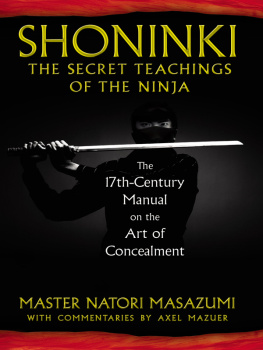
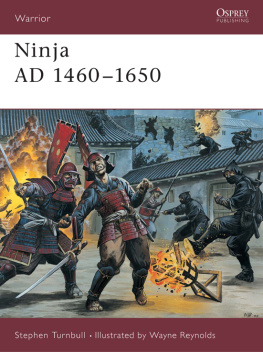
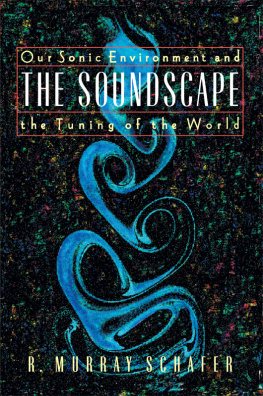
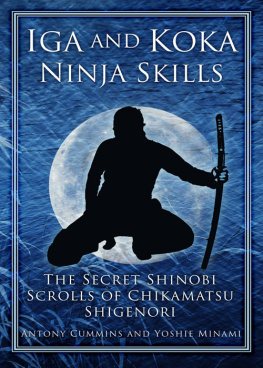

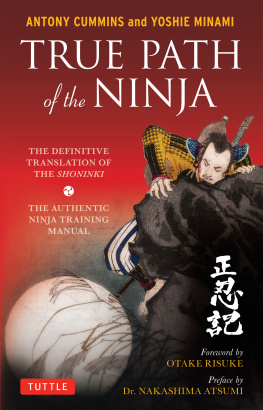
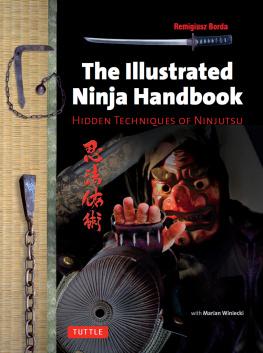
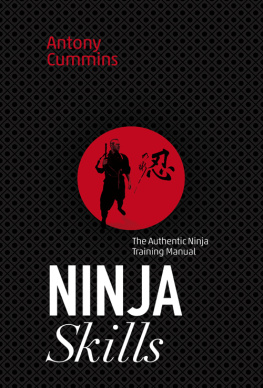
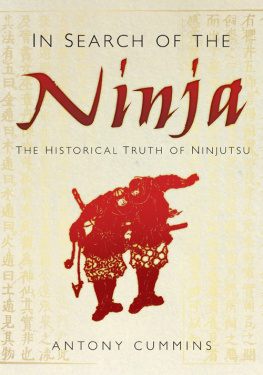


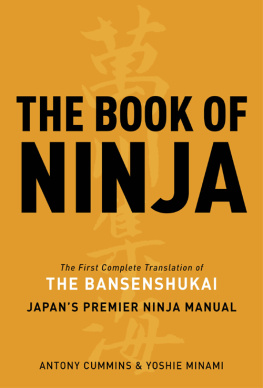
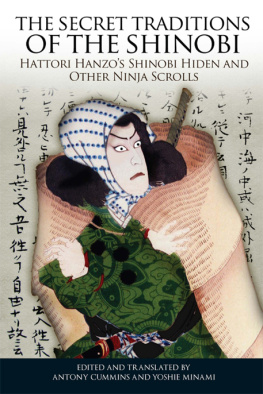



 , which means technique, art, or for ja
, which means technique, art, or for ja